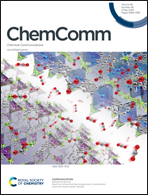Supramolecular polymer bottlebrushes
Abstract
The field of supramolecular chemistry has long been known to generate complex materials of different sizes and shapes via the self-assembly of single or multiple low molar mass building blocks. Matching the complexity found in natural assemblies, however, remains a long-term challenge considering its precision in organizing large macromolecules into well-defined nanostructures. Nevertheless, the increasing understanding of supramolecular chemistry has paved the way to several attempts in arranging synthetic macromolecules into larger ordered structures based on non-covalent forces. This review is a first attempt to summarize the developments in this field, which focus mainly on the formation of one-dimensional, linear, cylindrical aggregates in solution with pendant polymer chains – therefore coined supramolecular polymer bottlebrushes in accordance with their covalent equivalents. Distinguishing by the different supramolecular driving forces, we first describe systems based on π–π interactions, which comprise, among others, the well-known perylene motif, but also the early attempts using cyclophanes. However, the majority of reported supramolecular polymer bottlebrushes are formed by hydrogen bonds as they can for example be found in linear and cyclic peptides, as well as so called sticker molecules containing multiple urea groups. Besides this overview on the reported motifs and their impact on the resulting morphology of the polymer nanostructures, we finally highlight the potential benefits of such non-covalent interactions and refer to promising future directions of this still mostly unrecognized field of supramolecular research.



 Please wait while we load your content...
Please wait while we load your content...